#greco roman egypt
Explore tagged Tumblr posts
Text

garnet & gold finger rings, found in beirut lebanon, made in egypt, 200-100 b.c. british museum. 1917,0501.770
#ancient egypt#egypt#roman egypt#greco roman egypt#greco egypt#lebanon#beruit#eastern mediterranean#jewellery
121 notes
·
View notes
Text




~ Oracle statue of Aphrodite Arsinoe II.
Period: Hadrian; Greco-Roman Period
Place of origin: Egypt
Medium: Dolomite
#ancient#ancient art#history#museum#archeology#ancient egypt#ancient sculpture#ancient history#roman#archaeology#egypt#egyptology#Egyptian#ancient roman#oracle#aphrodite#Aphrodite Arsinoe II#hadrian#Greco-Roman#dolomite
701 notes
·
View notes
Text
2,000-Year-Old Fayum Portraits from Roman Egypt: also known as "mummy portraits," these funerary paintings were often fastened to the coffins of the people they depicted

Above: Fayum portrait of a woman from Roman-occupied Egypt, c.100-110 CE
Fayum portraiture was a popular funerary practice among the upper-class families of Roman Egypt from about 50 CE to 250 CE. Given the high mortality rates for children during this period, many of these portraits depict children and youths, but adults were often featured, too.
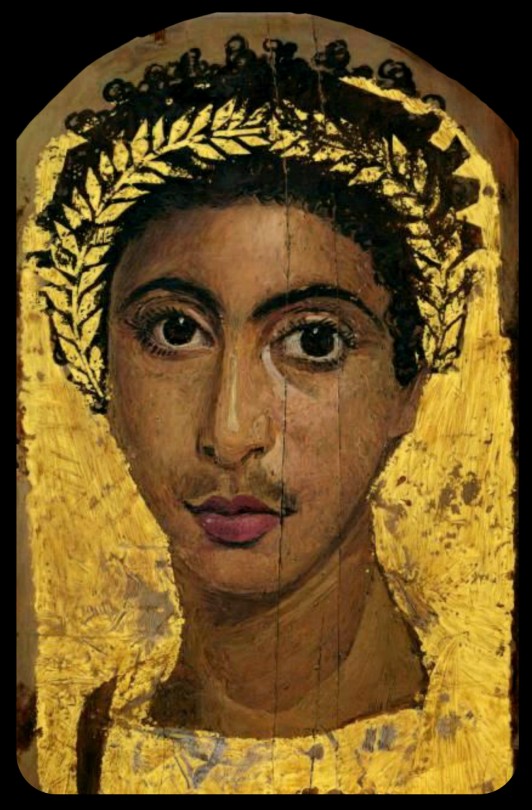
Above: portrait of a youth wearing a golden wreath, c.130-150 CE; the wreath and the background of the portrait are both gilded
The population of the Faiyum Delta, where most of these portraits were found, largely contained individuals with both native Egyptian/North African and Greek heritage. The Greek lineages can be traced back to the Ptolemaic period, when the Greeks gained control of Egypt and began to establish settlements throughout the region, gradually leading to a cultural diffusion between the Greek and Egyptian populations. The Romans eventually took control of Egypt in 31 CE, absorbing it into the Roman Empire and colonizing much of North Africa, but the demographics of the Faiyum Delta remained largely unchanged.

Above: portrait of a man with a mole on his nose, c.130-150 CE
Many of these Fayum portraits reflect the same blend of ethnic and cultural roots, depicting individuals with both Greek and native Egyptian heritage (a claim that is supported by both archaeological and genetic evidence). Some portraits may also depict native Egyptians who did not have any European ancestry, but had been integrated into Greco-Roman society.

Above: portrait of a bearded man, c.170-180 CE
These representations of native Egyptians provide us with unique insights into the actual demographics of Roman-occupied Egypt (and the ancient world at large). Non-European peoples are rarely included in depictions of the classical world; it's also interesting to see the blend of cultural elements that these portraits represent.
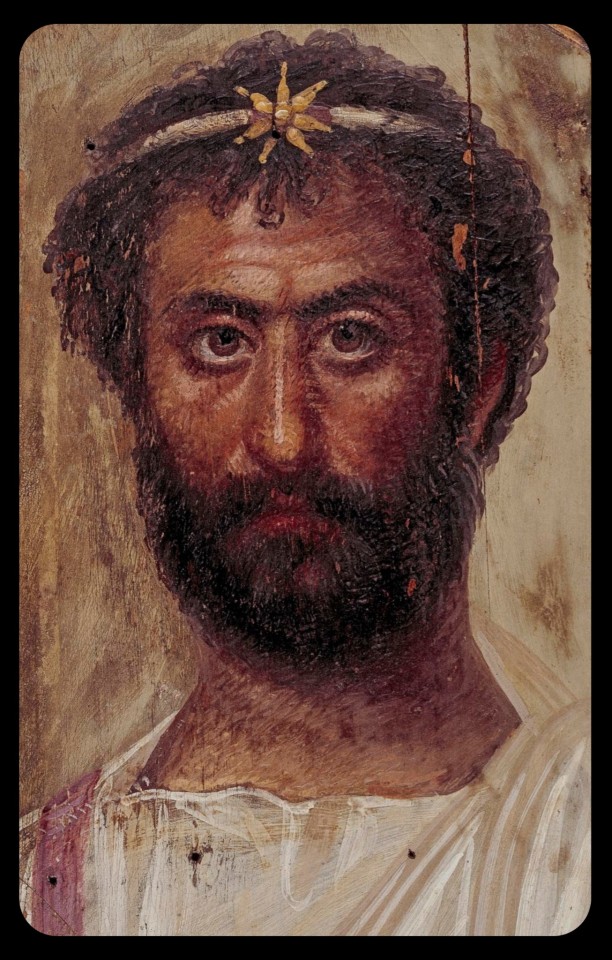
Above: portrait of a priest of Serapis, c.140-160 CE; the man in this portrait is shown wearing a fillet/crown that bears the seven-pointed star of the Greco-Egyptian god, Serapis
As this article explains:
In the 1800s and early 1900s, Western art historians didn’t know what to make of these portraits. Scholars of Roman history labeled them Egyptian. Scholars of Egyptian history labeled them Greco-Roman. These binary academic classifications failed to capture the true complexity of the ancient (or, indeed, modern) Mediterranean. In reality, Fayum portraits are a syncretic form, merging Egyptian and Greco-Roman art and funerary practices. They reflect the cosmopolitanism of both Roman and Egyptian history.

Above: portrait of a man, c.80-100 CE (left); portrait of a bearded officer, sometimes referred to as "Perseus," c.130-175 CE (right)
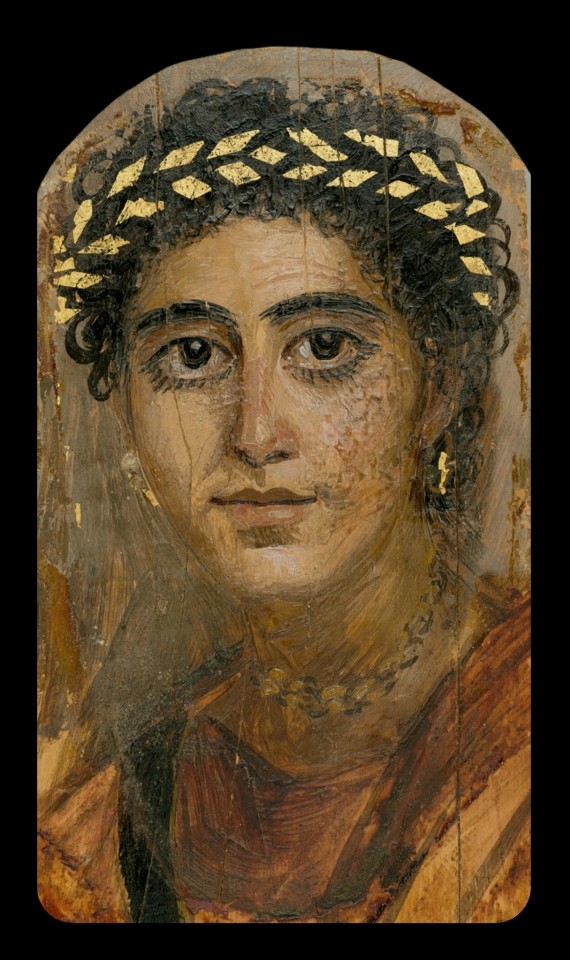
Above: portrait of a young woman in red, c.90-120 CE
Nearly 1,000 of these portraits are currently known to exist.
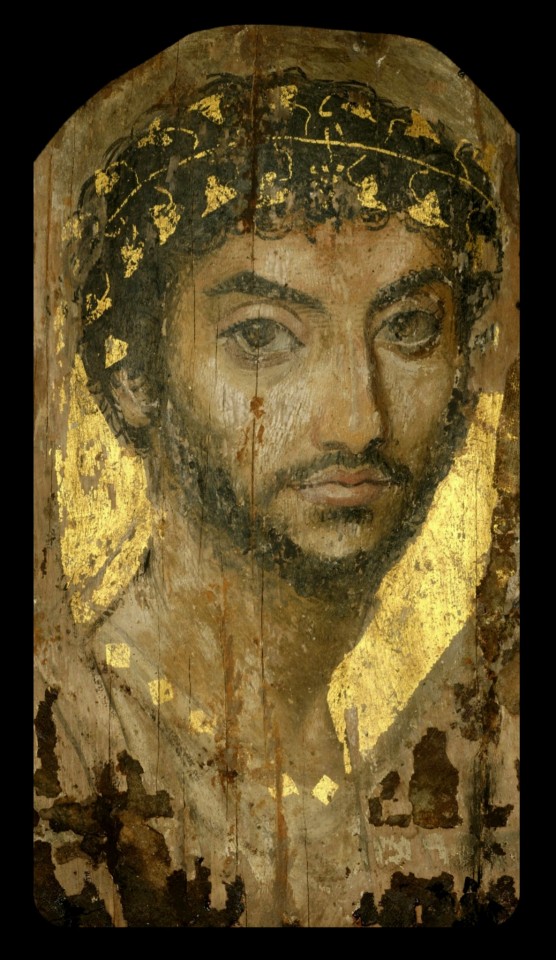
Above: portrait of a man wearing a gilded ivy wreath, c.100-150 CE
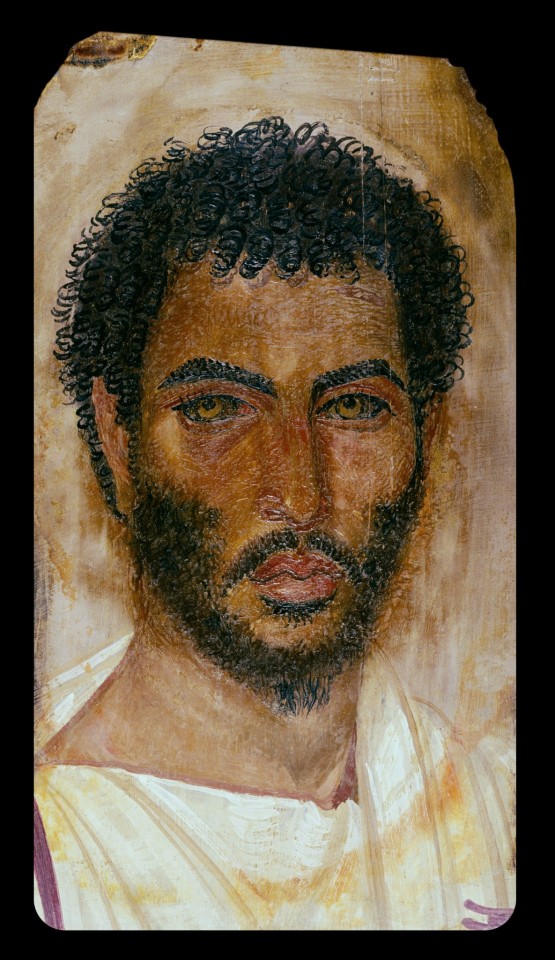
Above: portrait of a bearded man, c.150-170 CE
Sources & More Info:
Curationist: Fayum Portraits
Harvard Art Museums: Giving the Dead their Due: an Exhibition Re-Examines Funerary Portraits from Roman Egypt
Getty Museum: APPEAR Project
Getty Museum: Faces of Roman Egypt
National Geographic: Ancient Egypt's Stunning, Lifelike Mummy Portraits
The Athens Centre: The Myth of Whiteness in Classical Sculpture
Forbes: Whitewashing Ancient Statues: Whiteness, Racism and Color in the Ancient World
#archaeology#artifact#anthropology#history#ancient history#art#fayum portraits#roman egypt#ancient rome#ethnography#painting#portrait#north africa#people of color#egypt#religion#greco roman#greek#classical antiquity#fayum#mummy portraits#romano egyptian#representation
417 notes
·
View notes
Text

Statuette of Bes with Horus and pot
The dwarf Bes stands with his legs apart, with a statuette of Horus on his left arm and a pot under his right arm. His overlong phallus hangs down between his legs.
The figure belongs to the group of so-called Faiyum terracottas. They are part of the religious household, children's toys, but also cult symbols, grave goods, pilgrimage images, votive offerings and magical objects to banish evil forces. They can be found in houses, graves and sanctuaries.
Graeco-Roman Period, 3rd century BC to 3rd century AD. Now in the MKG Hamburg. 1989.526
56 notes
·
View notes
Text

Of all the asoiaf opinions that make me react like ^^^ the biggest one has to be "valyrians were an ethnic minority fleeing destruction and westeros is bigoted against them"
#like ......#guess who else was a minority#the roman army in ancient britain#doesnt make them right!! or persecuted#also the greek ptolemaic dynasty in egypt and other greco-romans were also an upper class ethnic group that was in the minority#and also used incest to ensure the retention of power and status within a small handful of people#were they persecuted by the mean egyptians?
20 notes
·
View notes
Text
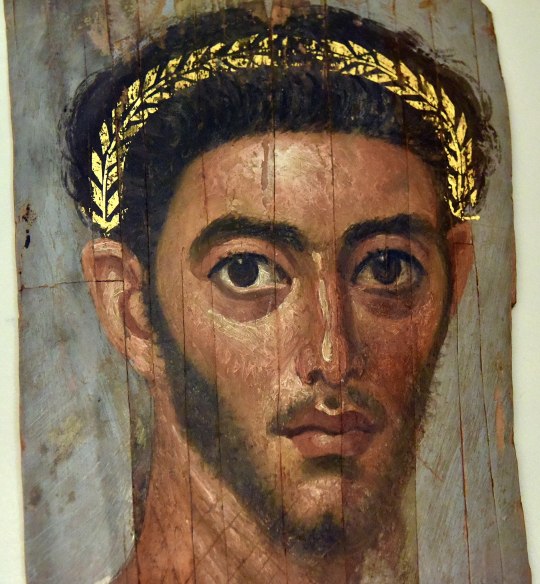
Egyptian mummy portrait (encaustic on wood) of a Roman soldier wearing a gold wreath. Artist unknown; ca. 130 CE (reign of the emperor Hadrian). Found at er-Rubayat in the Fayum; acquired in 1927 and now in the collection of the Altes Museum, Berlin. Photo credit: Osama Shukir Muhammed Amin FRCP/Wikimedia Commons.
#classics#tagamemnon#Ancient Rome#Roman Empire#Egypt#Ancient Egypt#Roman Egypt#Greco-Roman Egypt#portrait#portrait painting#mummy portrait#art#ancient art#Roman art#Ancient Roman art#Roman Imperial art#Egyptian art#Ancient Egyptian art#Romano-Egyptian art#Fayum#Altes Museum#encaustic#encaustic on wood
328 notes
·
View notes
Text

Archaeologists Unearth Mummies with Golden Tongues in Egypt
Archaeologists have unearthed several ancient tombs with dozens of mummies—including some with golden tongues.
Researchers made the findings during excavations at the ancient city of Oxyrhynchus, an extensive archaeological site located around 100 miles south-southwest of Cairo near the modern-day municipality of Al-Bahnasa in Minya Governorate.
Oxyrhynchus was "very important" during ancient Egypt's Greco-Roman period, which spanned hundreds of years from the late fourth century B.C. until the 7th century, Esther Pons Mellado and Maite Mascort, co-directors of a Spanish archaeological mission at the site.
"[It[ was the second city of Egypt after Alexandria. There was a great business and cultural relationship between these two cities," they said.
The Greco-Roman period began with Alexander the Great's conquest of Egypt—then controlled by the Persians—in 332 B.C. An ancient Greek state known as the Ptolemaic Kingdom was subsequently established in 305 B.C., which ruled Egypt until 30 B.C. when the region was conquered by the Romans.

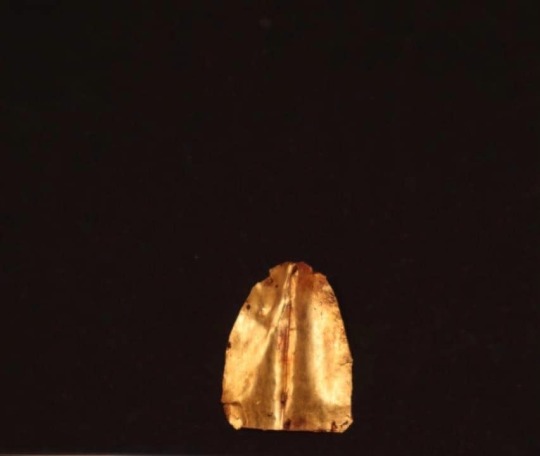
The territory became a province of the Roman Empire, which eventually divided into a western and eastern portion—with Egypt belonging to the latter. The Roman period ended around A.D. 641 when Arab forces conquered Egypt.
The latest excavations at Oxyrhynchus took place in November and December 2023. Over the course of these investigations, Pons Mellado, Mascort and colleagues discovered several tombs from the Greco-Roman era, as well as human remains and artifacts.
The finds include two tombs dating to the Roman period, built with limestone blocks. In these tombs, the archaeologists uncovered more than 20 mummified individuals covered in multi-colored wrappings, as well as papyri with Greek texts and mud seals with Egyptian iconography.
Two of these mummies were found to have pieces of gold shaped into the form of a human tongue placed where their real tongue was. Such golden tongues have previously been found at Oxyrhynchus and, indeed, other archaeological sites in Egypt.


"Until now we have found 16 golden tongues in Oxyrhynchus," Pons Mellado and Mascort said.
Experts think the ancient Egyptians may have placed gold tongues on some human remains to enable the spirits of the deceased to communicate with Osiris—the god of the underworld—and to help them cross into the afterlife.
"The Egyptian people deposited the golden tongues on the tongue to restore vital functions to the dead and also so that the body remained intact in the afterlife. For the Egyptians, gold was the flesh of the gods," Pons Mellado and Mascort said.
In addition to the Roman-era tombs, the archaeologists also discovered three "hypogea"—or underground tombs—dating to the Ptolemaic period that had been excavated beneath the natural rock.
In these hypogea, the researchers uncovered several more mummies covered in colorful wrapping, a number of anthropomorphic stone sarcophagi (some of which were closed) and various terracotta statues depicting the goddess Isis-Aphrodite, among other artifacts. This deity is a form of the Egyptian goddess Isis combined with the fertility aspects associated with the Greco-Roman goddess Aphrodite.


In one of the hypogea, the team also found many multi-colored limestone blocks with decorations, including depictions of humans, snakes, pigeons and plants.
All these findings are very important for the history of the funerary world in Oxyrhynchus," Pons Mellado and Mascort said.
"It is the first time that we have found an Oxyrhynchus terracotta with the image of Isis-Aphrodite, and the first time that this kind of piece has appeared in this area of Middle Egypt. The limestone blocks with decoration [are also very important]."
The limestone blocks—another new finding at Oxyrhynchus—appear to have come from some kind of construction, although the nature of the structure is unclear.
By Aristos Georgiou.
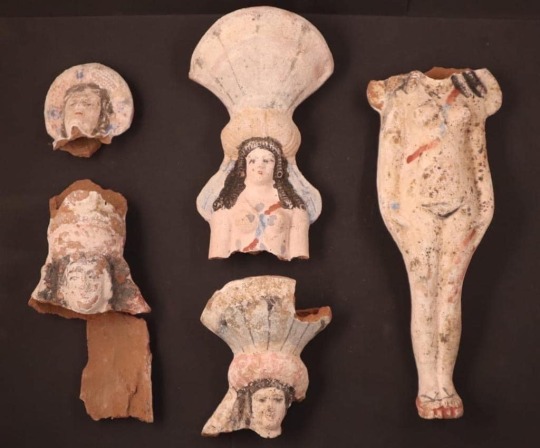

#Archaeologists Unearth Mummies with Golden Tongues in Egypt#ancient city of Oxyrhynchus#Greco-Roman period#ancient graves#ancient tombs#ancient artifacts#archeology#archeolgst#history#history news#ancient history#ancient culture#ancient civilizations#ancient egypt#egyptian history#roman history
83 notes
·
View notes
Photo

Hermetica: The Ancient Greek and Latin Writings which contain Religious or Philosophic Teachings ascribed to Hermes Trismegistus
#hermetica#corpus hermeticum#hermeticism#hermetic philosophy#egyptian philosophy#greek philosophy#hermes#hermes trismegistus#mercurius#thoth#ascelipius#hellenistic#late antiquity#library of alexandria#greco-roman egypt#emerald tablet#gnosis#gnosticism
221 notes
·
View notes
Text

Allegory for the Greco-Roman influence on Egypt.
Pencil and paper, inspiration taken from the Crocodile Fountain in Nîmes.
This piece had me draw an X on the tiled ground in pencil to put the ball of my left foot: the large quantity of people who wanted to stand in front of me or take pictures without noticing I was there had me moving around constantly. Most were aimable and simply moved a step to the left or right.
@be-gentle-with-littluns-2
7 notes
·
View notes
Text
Statuette Isis-Aphrodite with Egyptian vulture cap
Roman Period, ca. A.D. 161–180
Metropolitan Museum of Art, New York

5 notes
·
View notes
Text
Ok, so I've just recently downloaded a New kind of Video Program that I finally get a chance to edit my own videos using Clipchamp while also using 4k Video Downloader (just for using some Clips of Media and for Random Music.
I've just started Another AMV that I've worked on focusing on one of my Main Fandoms, and I would like to know y'all's personal opinion on this work that I did with a New Editing Program.
youtube
The Reason as to why I prefer to Unlist my Videos, it's just so that I probably won't get copyrighted but I'll probably change them into Public Videos one day if I ever gave myself Another Chance.
#indie text#spongebob squarepants#the spongebob squarepants movie#sponge out of water#spongebob#king neptune#flying dutchman#the flying dutchman#the prince of egypt#non disney#the plagues#video#Youtube#my videos#god of war#hercules#greco roman mythology
5 notes
·
View notes
Text


Roman decorated cylindrical amulet case, Egypt, c. 1st-2nd century. British Museum, 1917,0601.2983.
#roman empire#history#british museum#amulet#roman#ancient egypt#roman egypt#greco egypt#greco roman egypt
17 notes
·
View notes
Text
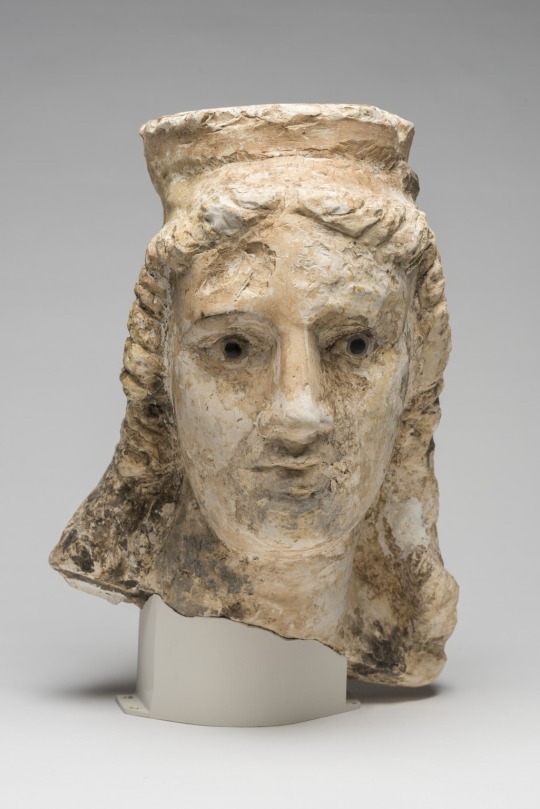


~ Female Head.
Culture: Graeco-Egyptian
Place of origin: Akhmim, Egypt
Date: 1st century B.C.-A.D. 1st century
Period: Ptolemaic Period-Roman Period
Medium: Limestone, stone, pigment
#ancient#ancient art#history#museum#archeology#ancient egypt#ancient sculpture#roman#ancient history#archaeology#Greco-Roman#female head#portrait#akhmim#Egyptian#egyptology#Egypt#ptolemaic#roman period#1st century B.C.#a.d. 1st century
283 notes
·
View notes
Text
Well, that's less than ideal. Let's see... Horus, are you available?
#waffle reads#percy jackson#blood of olympus#i figure we want some non-greco-roman god into the mix#it should be someone fairly close to greece#i figure if the abrahamic one were going to intervene he would have by now#egypt is the only other mediterranean place where i can think of any names#(nor am i coming up with anyone else from the middle east or europe south of the north sea)
1 note
·
View note
Text

33 Greco-Roman Family Tombs Found in Aswan, Egypt
An Egyptian-Italian archaeological mission has uncovered 33 family tombs from the Greco-Roman period near the Aga Khan Mausoleum in Aswan, Egypt.
The joint mission, led by Dr. Mohamed Ismail Khaled, Secretary-General of the Supreme Council of Antiquities, and Professor Patrizia Piacentini from the University of Milan, made the announcement earlier this month. The tombs, discovered west of Aswan’s Nile, date back to the Late Period and the Greco-Roman era, spanning from the sixth century BCE to the third century CE.
The Aga Khan Mausoleum, the resting place of Aga Khan III, Sir Sultan Muhammed Shah, who passed away in 1957, now sits above a necropolis with over 400 tombs. Dr. Khaled noted that it adds a new historical dimension to the Aga Khan area. The tombs vary in architectural style, with some featuring arched entrances and open courtyards made from mudbrick, while others are directly carved into the mountain rock. This diversity reflects the social stratification of the period.
Among the notable finds are mummified remains and funerary objects, including clay figures, sacrificial tables, ceramics, and painted cartonnages. An intriguing discovery within a stone coffin revealed the mummified remains of an adult and a child, likely adhered together by embalming fluids. Further analysis is planned to understand their relationship.



Anthropological and radiological studies have provided insights into the health conditions of buried individuals. Dr. Patricia Piachenti from the University of Milan noted that 30% to 40% of the deceased were infants, children, or adolescents. This high mortality rate among the young offers clues about prevalent diseases during that period. The remains of several adult women showed signs of pelvic bone trauma, suggesting childbirth complications or other medical conditions. Other mummies exhibited evidence of anemia, malnutrition, chest diseases, tuberculosis, and osteoporosis.
“Initial studies reveal that many individuals suffered from infectious diseases and bone disorders,” said Dr. Piacentini. “Some adult females showed signs of medical interventions such as amputations and bone trauma, indicating that ancient Aswan had developed some medical practices.”
Dr. Ayman Ashmawy, Head of the Egyptian Antiquities Sector, said that the lower parts of the necropolis were likely reserved for the middle-class residents of Aswan Island, including physicians, artisans, merchants, and storekeepers. The upper parts of the necropolis, however, appear to have been reserved for the wealthier upper class. This social stratification is reflected in the differing architectural styles and the types of artifacts found within the tombs.



The discoveries also include remains of colored cartonnage, clay and stone figurines, wooden coffins, and offering tables. The tombs’ architectural complexity reflects the advanced skills of the ancient craftsmen who overcame the challenges of digging into rock and constructing low-ceilinged funerary rooms and galleries.
The mission has employed the latest technology, including X-ray and CT scans, to analyze the mummies and artifacts. These technologies have allowed researchers to create three-dimensional reconstructions of the mummies and identify items such as bracelets found on some individuals.
By Dario Radley.



#33 Greco-Roman Family Tombs Found in Aswan Egypt#Aga Khan Mausoleum#Late Period#Greco-Roman era#ancient grave#ancient tomb#ancient mausoleum#ancient artifacts#archeology#archeolgst#history#history news#ancient history#ancient culture#ancient civilizations
41 notes
·
View notes




















